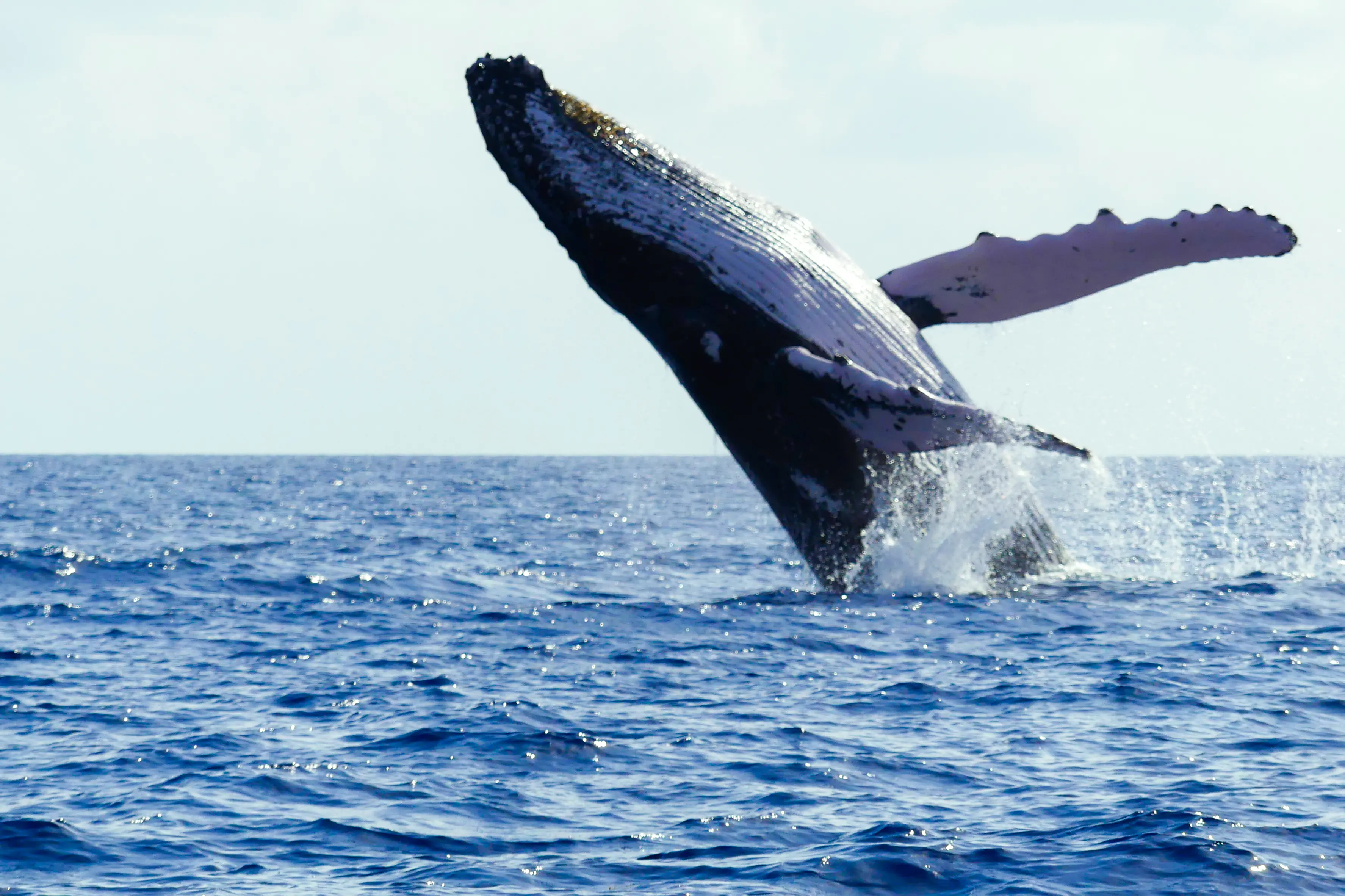Whale communication: a fascinating language across the oceans
- coraliebrossardpro
- May 21
- 4 min read
What do we know about whale language?
Whales are among the most majestic and mysterious creatures of the oceans. One of the most fascinating aspects of their lives is the way they communicate. These giants of the sea use a wide range of sounds, from enchanting songs to complex clicks, which vary depending on the species and regions of the world.
What do we know today about their language?
How do the whales we observe in Guadeloupe interact with each other?
Let’s dive into the incredible sound world of humpback whales in Guadeloupe and beyond.
Whale communication: A unique and structured acoustic language
Unlike humans, whales cannot rely on sight or smell over long distances underwater. They depend on hearing to communicate, hunt, and navigate. Whale language is based on several types of sounds:
Songs: Mainly produced by humpback whales, these complex melodies can last up to 20 minutes and be repeated for hours. Each population has its own repertoire of songs, which evolves over time, much like a musical trend spreading across the oceans.
Whistles and grunts: Emitted by various whale species, these sounds serve social communication, especially between a mother and her calf.
A recent study revealed that whale songs share many similarities with human language. These songs follow precise syntactic rules, with an organized structure of "phrases" and "patterns."
This discovery challenges our understanding of cetacean cognitive abilities and suggests they possess a far more elaborate communication system than previously thought.
Meet the humpback whales in Guadeloupe with Soleil Excursions from December to May
Whale communication : the songs of whales crossing the oceans
Studies have shown that whales do not all “speak” the same language. Humpback whale songs, for example, differ from one ocean to another.
A fascinating discovery highlighted the transmission of songs between distant populations. Researchers observed that some songs appear in one region and gradually spread over thousands of kilometers across different whale groups. This phenomenon has been particularly studied in the Pacific, where a song originating near Australia was adopted by whales as far away as South America within a few years.
This suggests an exceptional cultural transmission mechanism in these marine mammals, comparable to humans learning new musical trends. These vocal exchanges between distant populations reflect advanced social intelligence and an astonishing capacity to adapt.
Moreover, scientists have observed that some whale species modify their songs over time, similarly to human linguistic evolution.
These adaptations may respond to specific social or environmental needs.
Whales in Guadeloupe: Voices from the depths
During our excursions with Soleil Excursions, we have had the chance to observe many humpback whales in Guadeloupe’s waters.
Sometimes, by placing a hydrophone underwater, we can hear their songs resonate across the vast ocean.
Sometimes the sound is so powerful that it can be heard by the human ear without special equipment. These songs, produced only during the mating season, likely play a key role in mate selection.
Researchers Roger Payne and Scott McVay were the first to analyze these melodies in 1971, revealing a precise hierarchical structure.
Each song is made up of distinct sound units, varying in frequency between 20 Hz and 10 kHz, making them perfectly audible to the human ear. Variations in frequency and amplitude create an incredibly rich sound repertoire, showcasing the complexity of their language.
A magical moment reminding us of how elaborate and fascinating their communication is.
A magical moment reminding us of how elaborate and fascinating their communication is.
Whales come to the warm Caribbean waters, where we are usually lucky to observe them from December to May.
However, since 2024, we have noticed they seem to arrive a little later in the season and extend their stay until the end of May.
This migration allows them to give birth and raise their calves in a safer environment, away from the predators of the cold northern waters.
The mother-calf relationship is essential, and their communication plays a crucial role in the calf’s survival. The mother produces specific sounds to guide her calf and encourage it to swim, while remaining discreet to avoid attracting predators, especially orcas.
Orcas : masters of sophisticated communication
Indeed, although orcas are mainly associated with colder waters, they are known for their intelligence and extremely sophisticated communication. Each orca group has its own dialect, used to coordinate hunting and interact within the clan.
This linguistic diversity within the same species is further proof of cetaceans’ advanced intelligence.

Whale language, threatened by human activities
Unfortunately, ocean noise pollution disrupts whale communication. The sounds of ships, military sonars, and underwater industrial activities often mask their acoustic signals, forcing them to alter their sound frequencies to be heard.
Some scientists fear this interference affects their ability to find mates, coordinate movements, or even avoid predators. Protecting marine habitats and reducing noise pollution are therefore essential to preserve this incredible form of communication.
In conclusion: whale language, a mystery still to explore
Whale communication remains an exciting research field, with many mysteries yet to be uncovered. Each discovery brings us closer to understanding these giants of the sea and their fascinating sound world.
At Soleil Excursions, we are committed to sharing this knowledge with our visitors, raising awareness about the beauty and fragility of marine life.
Observing a whale and hearing its song is a life-changing experience that reminds us how crucial it is to protect these ocean wonders.

What if you came to listen to whale songs for yourself?

Join us in Guadeloupe for a unique and immersive adventure meeting these giants of the sea!
Photo credits: Valérie Gueit - Photos taken with zoom lenses in compliance with Agoa Sanctuary protocols and approach distances, and in Polynesia alongside René Heuzey: A Ocean of Life.
- Source : Soleil Excursions



Comments